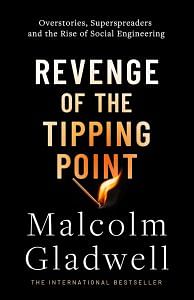First came the good news. Non-cancer pain — this giant untested market that Purdue wanted to crack open — turned out to be a big part of the physicians’ practices. The doctors wanted more treatment options. “When discussing the concept of the ‘ideal’ pain killing medication,” the Groups Plus report stated, “there was universal agreement that [the doctors in the focus group] would like to have the efficacy of the narcotics without the concern regarding side effects or addiction.” That bit about no side effects or addiction didn’t bother Purdue: They would just have their sales reps lie and say that OxyContin wasn’t that addictive. “In our judgment,” the report went on, “there definitely is an opportunity for Purdue…to build a significant business for OxyContin.”
Then came the bad news. The sessions with the doctors from Houston were a disaster. Why? Texas was a triplicate state. The Houston doctors were living under the Madden overstory.
The triplicate laws seem to have a dramatic effect on the product usage behavior of the physicians. Specifically, the groups in Texas revealed almost no use of the Class II narcotics for treatment of non- cancer pain.
Class 2 or Schedule 2 is the technical term for drugs that are potentially problematic if they aren’t used appropriately, such as Percocet, Percodan, or codeine. OxyContin was going to be Schedule 2 as well, and the Houston doctors prescribed those drugs “less than five times a year . . . if at all.”
The report went on: The [Houston] doctors did not want to provide the Government with any ammunition to question their medical protocols relative to pain management. The mere thought of the government questioning their judgment created a high level of anxiety in the focus group room among the doctors.
Writing triplicate prescriptions was more trouble than others, due to the details of the forms and the various people that need to be copied on them. To the extent that they can avoid this extra effort, they will try to follow alternate protocols.
The focus- group report ran for seventy pages, and again and again it returned to this point. The triplicate and nontriplicate states were like night and day.
The [primary care physicians] and surgeons in the non-triplicate state (New Jersey) indicated a very high likelihood of using OxyContin for selective treatment of non- cancer related pain, and the rheumatologists in Connecticut also felt it had a place in their practice. However, the doctors in the triplicate state were not enthusiastic about the product at all . . .
And then:
Among the physicians in these triplicate states who do use Class II narcotics in the treatment of non- cancer pain, our research suggests the absolute number of prescriptions they would write each year is very small, and probably would not be sufficient to justify any separate marketing effort.
Purdue’s management team read the Groups Plus report and took it seriously. The launch of OxyContin — one of the most sophisticated and aggressive drug- marketing campaigns the world of medicine has ever seen — was targeted at states without triplicate laws. So, no big push in New York State. But yes to West Virginia. No to Illinois. But yes to Indiana. No to California. But yes to Nevada. No to Texas and Idaho. But yes to Oklahoma and Tennessee — with the result that the opioid epidemic did not hit the entire United States equally. It became, instead, a perfect example of small- area variation. Opioids rained heavily only on those states where there was no triplicate program or Madden overstory to keep them in check.
Let’s look again at the top five opioid-consumers. These are all “Portenoy states,” without a triplicate program.
Nevada 1,019.9
West Virginia 1,011.6
Tennessee 938.3
Oklahoma 884.9
Delaware 881.5
Here is the per-capita opioid consumption for the same year in the Madden states.
Illinois 366
New York 441.6
California 450.2
Texas 453.1
Idaho 561.1
Illinois had one-third the opioid use of Nevada and West Virginia. New York had half the problem Tennessee did. Of the triplicate states, only Idaho came anywhere close to the national average.
If you burrow a bit further into the numbers, the differences grow even more astonishing. Here is the breakdown of how willing orthopedic surgeons were to prescribe opioids to their patients. The period is 2013 to 2016 — long after everyone was aware of how dangerous this class of drugs was. This is the geographic distribution of the top 10 percent of prescribers.
West 741 (8.7 percent)
Northeast 745 (8.8 percent)
Midwest 1,854 (21.8 percent)
The West is dominated by California — Paul E. Madden’s state. Statistically, there were only a handful of high- prescribing orthopedists there. The Northeast is dominated by New York State. Same thing. But just look at the South — the triplicate-free zone, the land of the Portenoy overstory:
South 5,170 (60.8 percent)
Wow. Think for a moment about how remarkable this is. In the years before the Second World War, a blustery, self- promoting drug warrior in San Francisco has the idea of making California’s doctors use a special painkiller- prescription pad, with two carbon copies. That simple bureaucratic intervention evolves into an overstory — a narrative that says opioids are different, spurring the physician to pause and think before prescribing them. And that overstory is so compelling that when Purdue tests its new painkiller in a triplicate state half a century later, it runs into a brick wall.
Overstories matter. You can create them. They can spread. They are powerful. And they can endure for decades.
Today among economists, an entire cottage industry is devoted to the many ways that states with triplicate laws differ from all the others. So, take Massachusetts and New York. If New York had Massachusetts’s opioid-overdose rate from 2000 to 2019, the economist Abby Alpert estimates that an additional 27,000 New Yorkers would have died of overdoses. 27,000. Massachusetts is not poorer than New York. It doesn’t have a higher unemployment rate. It doesn’t have a bigger problem with gangs or organized crime or drug trafficking. The two states are like peas in a pod. The only relevant difference is that half a century ago New York forced doctors to make two additional carbon copies of every prescription they wrote — and Massachusetts did not. And those carbon copies saved thousands of lives.
 This excerpt from Malcolm Gladwell’s ‘Revenge of the Tipping Point: Overstories, Superspreaders, and the Rise of Social Engineering’, has been published with permission from Hachette India.
This excerpt from Malcolm Gladwell’s ‘Revenge of the Tipping Point: Overstories, Superspreaders, and the Rise of Social Engineering’, has been published with permission from Hachette India.






